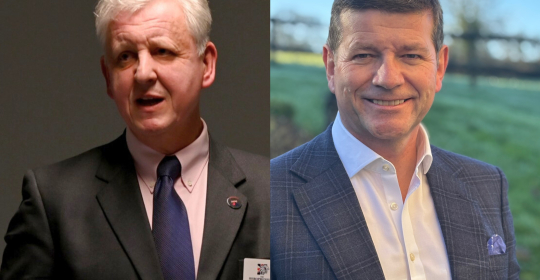Welcome to the world of cross-disciplinary team dynamics! Here, companies bring together people from different backgrounds that really spark creativity and get things done. In business, the potency of cross-functional team collaboration cannot be overstated. It's an alchemy of skills, perspectives, and expertise that drives companies towards groundbreaking achievements.
Why is this blend of skills so crucial? Well, research by McKinsey indicates that teams blending various skills and backgrounds have a 35% edge in performance over their teams where everyone thinks the same. That's huge! It shows us that when we bring different minds together, we're not just ticking a box but making magic happen. In this article, we'll unpack insights and strategies to master the art of crafting and steering these dynamic teams. So, buckle up as we journey into the intricate world of cross-functional team collaboration, where every member plays a pivotal role in scripting success stories.
Understanding Cross-Functional Team Dynamics
Understanding how a cross-functional team works is like getting to know a group of friends who all do different jobs. It's about how they share ideas, help each other, and work together to get things done, breaking through the usual office walls. It's this teamwork that makes companies really stand out.
Key Elements of Every Team Dynamics
Team dynamics are the foundation of how a team functions and achieves its goals. Here are some essential elements that keep these dynamics healthy and productive:
-
Communication:
It's all about talking and listening. A team that communicates well understands each other better and gets things done faster. It's like having a group chat where everyone feels comfortable sharing ideas and updates. Incorporating WebRTC group chat functionalities can further enhance this communication, allowing for real-time, efficient dialogue among team members, fostering an even greater sense of collaboration and understanding.
-
Trust:
When team members trust each other, they're not afraid to be themselves and take risks. It's like knowing your teammate has your back when you try something new. Implementing team-building activities give your employees the opportunity to deepen their relationship and foster trust with each other.
-
Roles and Responsibilities:
Everyone needs to know their part. It's like being in a band where each person plays a different instrument. Knowing who does what avoids confusion and keeps the team in harmony.
-
Conflict Resolution:
Let's face it, disagreements happen. But how a team handles them can make or break their success. It's about finding solutions together and not letting problems simmer.
Remember, these elements are vital, whether your team is developing a new product, working on a project, or just trying to improve how things are done.
Impact of Team Dynamics on Cross-Functional Team Performance
Team dynamics play a crucial role in the performance of cross-functional teams. When team members from different functional areas collaborate effectively, it boosts the team's overall efficiency and creativity. Good dynamics lead to a more agile and problem-solving oriented team. This collaborative work environment also enhances the decision-making process to produce strategic outcomes.
Conversely, poor team dynamics can hinder a cross-functional team's success. Issues like miscommunication, conflicting goals, or lack of trust can create divisions within the team, stifling creativity and slowing down progress. Therefore, understanding and nurturing positive team dynamics is essential for the success of any cross-functional project. It's about bringing together people with different skill sets and perspectives to achieve a common goal, creating a positive and productive work environment.
Challenges in Cross-Disciplinary Teams
Navigating a cross-disciplinary team isn't always smooth sailing. They face unique challenges like communication barriers, clashing work styles, conflicting goals, and sometimes, not seeing eye-to-eye on the big picture. These hurdles can make teamwork tricky, but overcoming them is critical to the team's success.
Communication Barriers in Cross Functional Teams
In cross-functional teams, communication barriers often arise. This happens because team members come from different departments, each with its own jargon and ways of doing things. For instance, a recruiter might include jargon in their questions for the marketing team. These language differences can lead to misunderstandings and slow down the collaboration process.
To tackle this, everyone on the team needs to communicate clearly. This means avoiding technical terms or explaining them when necessary. It's about creating an open environment where questions are encouraged and information is shared freely. When team members make an effort to speak the same language, they find it easier to work towards their common goal. You can also try to create your own custom messenger app if necessary and personalize it for your company’s needs.
Differing Work Styles
Differing work styles can be both a strength and a challenge in cross-disciplinary teams. Team members from different functional areas often have their own unique approaches to tasks and problem-solving. For example, a member from the development team might focus on the technical details, while someone from the marketing team might prioritize creativity and customer appeal. This variety of perspectives is valuable but can also lead to misunderstandings if not managed well.
Team leaders and members must recognize and respect these differences. Successful cross-functional teams find ways to blend these various work styles into a cohesive approach. This often involves open discussions about preferences and expectations and flexibility and willingness to adapt. When team members understand and value each other's approaches, they can collaborate more effectively to achieve common goals.
Conflicting Goals
Cross-functional teams often come from different backgrounds, each with its own objectives and priorities. This diversity is a strength, but it can also lead to conflicting goals. For instance, the sales team might be focused on increasing revenue, while the product team is more concerned with innovation and quality. These differing objectives can lead to tension and disagreements within the team, as each member may push for what benefits their department.
To overcome this, the team needs to establish a common goal that aligns with the organization's broader objectives. This requires open communication and sometimes compromise. When team members understand the bigger picture and how their work contributes to the company's overall success, they are more likely to work collaboratively and support cross-functional success.
Lack of Shared Understanding
Lack of shared understanding is also a significant hurdle in this team structure. This happens when team members are not on the same page about the team's goals or the path to achieving them. Each member brings their knowledge from their department, but they might need to fully grasp the goals and challenges of other areas. This gap in understanding can lead to confusion and misaligned efforts.
Building a shared understanding requires effort from everyone on the team. This includes taking the time to explain and discuss the different aspects of the project and how each part contributes to the overall goal. Regular meetings and open communication play a vital role here. When team members have a clear and common understanding of what they are working towards, they can collaborate more effectively and make decisions that benefit the whole team.
Strategies to Build a Cross-Functional Team Effectively
Building a cross-functional team effectively is like assembling a winning sports team. It's not just about finding people with the right skills but also about how they work together. This involves different strategies; let's discuss each of them in detail.
Clear Goal Setting for Effective Cross-Functional Team Work
For a cross-functional team to succeed, it's crucial to set goals that are clear and attainable. This means everyone knows exactly what they're working towards and how their role contributes to the bigger picture. It's like having a roadmap for a journey – it guides the team in the right direction and keeps everyone aligned.
When you set goals, it helps to make them specific and measurable. This way, it's easy to track progress and stay motivated. It also ensures that all team members understand the expectations and can work collaboratively towards achieving them. Clear goals are the foundation of a successful team, setting the stage for effective collaboration and shared success.
Effective Leadership Skills for Cross-Functional Team Management
Part of effective leadership also involves being able to present a team to an audience effectively. This skill is essential for garnering support and recognition for the team's efforts, as well as showcasing the unique blend of talents and the collaborative success of the team. It involves clearly articulating the team's objectives, the diverse skills of its members, and how their collaboration contributes to the organization's goals.
By honing these leadership skills, leaders can ensure that their cross-functional teams are not only successful internally but also recognized and valued by the broader organization and external stakeholders.
Building Trust
Building trust within a cross-functional team is crucial for its success. Trust forms the backbone of collaboration, allowing team members to feel secure in sharing ideas and opinions. When there's trust, people are more open to different perspectives and are willing to work together to solve problems. It creates a positive atmosphere where everyone feels valued and understood.
To build this trust, it's important to encourage open communication and transparency in the workplace. Regular team meetings and informal interactions can help team members get to know each other better. Recognizing and celebrating each other's contributions also goes a long way. When team members trust each other, they are more likely to collaborate effectively and work enthusiastically towards their common goals.
Promoting Collaboration
Promoting collaboration is all about creating an environment where everyone feels they can contribute. It's important for team members to understand that their unique skills and perspectives are valued. This sense of value encourages them to share ideas and work together towards a common goal. Collaborative work isn't just about working side by side; it's about combining strengths to achieve better results.
One effective way to promote collaboration is through regular team meetings and brainstorming sessions. These gatherings should be structured to allow everyone to speak up and contribute. Encouraging team members to provide feedback and suggestions can also foster a sense of involvement and teamwork.
HR Tools for Managing Cross-Disciplinary Teams
Managing cross-disciplinary teams can be complex, but the right HR software can make it much easier. These tools help in various areas, from selecting and recruiting the right mix of talents to training them for optimal performance.
Selection and Recruitment Strategies to Create a Cross-Functional Team
The selection and recruitment process is key in forming a successful cross-disciplinary team. It's about finding people who have the right skills and fit well with the team's culture and dynamics. This means looking beyond the resume to understand how a potential team member might collaborate and contribute to the team's goals.
In recruitment, HR tools can be incredibly useful for identifying these ideal candidates. These tools help assess not just technical skills, but also interpersonal and collaborative abilities. They ensure that new hires are competent in their field and ready to work effectively with team members from different departments.
Training and Development
Training and development programs enhance individual skills and create a team mindset that values collaboration and mutual understanding. One of the most efficient ways of deploying employee training is through a learning management system (LMS) that facilitates unique learning paths and goals. A good program design can help team members learn about different functional areas, understand the team's overall objectives, and develop the necessary skills for collaborative work.
Moreover, development initiatives play a significant role in keeping the team up-to-date with the latest industry practices and technologies. These programs encourage continuous learning and adaptability, which are essential in today's fast-paced work environment. By investing in these programs, organizations ensure that their cross-disciplinary teams are competent and capable of evolving and succeeding together in the long term.
Performance Evaluation
Performance evaluation focuses on both individual and collective achievements. Each team member's contribution to the team's shared goals is as important as their personal accomplishments. This approach to evaluation acknowledges how team members collaborate, communicate, and assist each other.
HR tools are particularly useful for this type of evaluation. They provide a comprehensive view of each person's role and impact within the team. By tracking both individual progress and team dynamics then providing performance reviews, these tools help highlight the importance of working together towards common objectives. This encourages team members to excel in their roles and actively contribute to the team's overall success.”
Conflict Management
Conflict management is a vital part of running cross-disciplinary teams. With team members from different departments and backgrounds, it's natural for conflicts to arise. Effective conflict management isn't about avoiding disagreements but handling them in a constructive and respectful way. Team leaders need to recognize conflicts early and address them openly, ensuring that they don't hinder the team's progress.
HR tools can be a big help in managing conflicts within teams. These tools offer structured methods for identifying, discussing, and resolving conflicts. They provide frameworks for open communication and problem-solving, helping team members navigate through disagreements and find common ground.
Tactics to Enhance Cross-Functional Collaboration
To enhance cross-functional collaboration, organizations really need to create an environment where everyone works well together. This can be achieved through a variety of tactics, like regular team-building activities and maintaining open and transparent communication, etc. These approaches help build a stronger, more cohesive team.
Regular Team Building Activities
Regular team-building activities are essential for maintaining the health and effectiveness of a cross-disciplinary team. These activities are not just about having fun; they're a strategic tool to help team members from different departments get to know each other better. This makes it easier to work together because they understand each other more.
These activities build trust, whether they're solving problems or just hanging out. Team members learn they can count on each other. This breaks down any awkwardness and makes the work atmosphere friendlier. When people are comfortable with each other, working on projects becomes smoother and more enjoyable.
Open and Transparent Communication
Open and transparent communication is crucial for any type of team structure. It's all about making sure everyone knows what's going on. When team members talk openly and share information freely, it helps avoid misunderstandings and keeps everyone on the same page.
This kind of communication also makes team members feel more valued and involved. When everyone has the chance to speak up and contribute, it leads to better ideas and solutions. It's not just about talking; it's about listening too. When team members feel heard, they're more likely to collaborate and work together effectively.
Cross-Training and Skill Sharing
Cross-training and skill sharing are powerful tactics in cross-disciplinary teams. When team members learn about each other's roles and skills, they gain a broader understanding of the team's work. This isn't just about picking up new skills; it's about seeing the big picture of what the team is trying to achieve. It helps everyone understand the different parts of a project and how they fit together.
Sharing skills makes the team more flexible and better prepared to handle unexpected challenges. If someone is away or busy, others can step in because they have a basic understanding of different roles. This makes the team stronger and more adaptable, ready to tackle whatever comes their way.
Encouraging Feedback and Suggestions
To enhance cross-functional collaboration, you must create a space where everyone feels comfortable sharing their thoughts and ideas. When team members know their opinions are valued, they're more likely to speak up and contribute. This open atmosphere leads to a wealth of diverse ideas, fostering innovation and creative problem-solving.
Feedback and suggestions also help in identifying areas that need improvement. Constructive feedback is like a tool for growth – it helps team members learn from each other and get better at what they do. Regularly exchanging feedback ensures the team continually evolves, adapts, and moves forward together.
Case Studies: Success Stories of Cross Functional Teams
Let's discuss some success stories that stand as testaments to the power of collaboration and diversity. These case studies inspire and provide valuable lessons on how different skills and perspectives, when woven together, can lead to extraordinary achievements.
Real-world Examples of Successful Cross-Disciplinary Teams
Let's delve into some remarkable success stories highlighting the impactful results of effective cross-functional teamwork.
-
Apple's Cross-Functional Innovation
At Apple, they've got a unique way of doing things when it comes to teamwork. It's different from your usual top-down, boss-knows-best kind of place. Instead, everyone, regardless of their role, gets a seat at the table. They're all about throwing ideas around and shaking up the status quo. This isn't just talk; it's how they came up with game-changers like the iPhone. It's all about different folks from different departments getting their heads together and making magic happen.
Let's look at the numbers – they're pretty mind-blowing. Back in 1997, Apple was this modest-sized company with about 8,000 employees and raking in $7 billion. Fast forward to 2022, and you've got this tech giant with a staggering 164,000 people on the payroll and pulling in a cool $394 billion. That's a whole lot of zeroes, right? But here's the thing – it's not just about getting bigger and more prosperous. It's about how they did it: by making sure everyone's working hand in hand, all focused on giving us customers something to smile about.
-
Nokia's Agile Collaboration
Nokia really leans into the whole cross-functional team vibe, especially when they're on the lookout for new talent. They're all about finding people who know their way around a diverse team and are relaxed by jumping between different locations. It's like they've woven agile development into their DNA, ensuring everyone's on the same page and working together smoothly.
Take Nokia Bell Labs as a prime example. It's this melting pot of brilliant minds from science and engineering, all huddled together. And it's not just for show – they've been behind some major breakthroughs, like the vacuum tube, which is no small feat.
Fast forward to today, and you can see how this focus on teaming up across disciplines is paying off big time for Nokia, especially in their network infrastructure game. Thanks to this approach, they're not just keeping up in the tech race – they're at the forefront, leading the charge in cool stuff like 5G and cloud networking. It shows how powerful it can be when you get a bunch of smart people from different fields to play nice and work together.
-
Cisco's Organizational Transformation
Cisco's really shaken things up with how they do business. Gone are the days of the old-school, stiff hierarchy. They're all about this cool, more go-with-the-flow, cross-functional setup. It's not just the bigwigs calling the shots; they've brought lower-level managers into the decision-making circle, which has totally amped up the teamwork vibes throughout the company.
This isn't just a change for the sake of change. It's been a game-changer for them. Just look at 2022, when they were the big dogs in router security. That's no small potatoes. It's all down to ditching the old "ideas flow downhill" model. Now, it's like ideas are popping up from every corner of the organization, and it's paying off big time.
By getting everyone in on the brainstorming, Cisco's managed to keep cranking out these innovative products that keep them ahead of the pack. It's a classic case of what can happen when you mix things up and get everyone involved. It's not just about climbing the ladder; it's about building a ladder everyone can climb.
Lessons Learned from Failed Team Dynamics
Failed team dynamics often stem from a lack of clear communication, trust issues, and insufficient understanding of each team member's role. When teams don't have a shared vision or fail to appreciate each other's contributions, it leads to inefficiencies and missed opportunities. As seen in the examples above, successful teams thrive on open communication, mutual respect, and a clear understanding of common goals. Learning from these examples, it becomes clear that fostering a collaborative environment is key to a team's success. If you think you could use more help, you can try professional business coaching.
Related Questions
-
What defines a cross-functional team?
A cross-functional team is a group of people with different expertise working together towards a common goal, combining diverse skill sets from various organizational departments.
-
How does collaboration in cross-functional teams benefit a company?
Collaboration in cross-functional teams leads to innovative solutions, increased efficiency, and enhanced problem-solving due to diverse perspectives and expertise.
-
What are the main features of a cross-functional team?
Key characteristics of a cross-functional team include diversity in skills and backgrounds, collaborative work ethics, and a shared goal that aligns with organizational objectives.
-
How do you measure the success of a cross-functional team?
Success in cross-functional teams is measured by the achievement of set objectives, the quality of collaborative output, and the team's ability to innovate and resolve challenges effectively.
Conclusion
Cross-functional teams represent a dynamic approach to achieving business objectives, harnessing a diverse range of skills and perspectives. Key to their success is effective communication, trust-building, clear role definition, and robust conflict management strategies. You can significantly enhance team collaboration and problem-solving abilities by implementing regular team-building activities and promoting open communication. Moreover, HR tools play a crucial role in managing these teams by streamlining selection, recruitment, training, and performance evaluation processes. The real-world success stories of companies like Apple, Nokia, and Cisco underscore the transformative power of cross-functional teamwork. They demonstrate how such collaboration can lead to innovation, efficiency, and a competitive edge in the market. For businesses looking to thrive in today's fast-paced and complex environment, embracing and effectively managing cross-functional teams is not just an option but a necessity.






